Seven tips for effective basket abandonment emails
In this article, we’ll look at how retailers can use cart abandonment emails, tips to make them more compelling, and some great examples of email design.
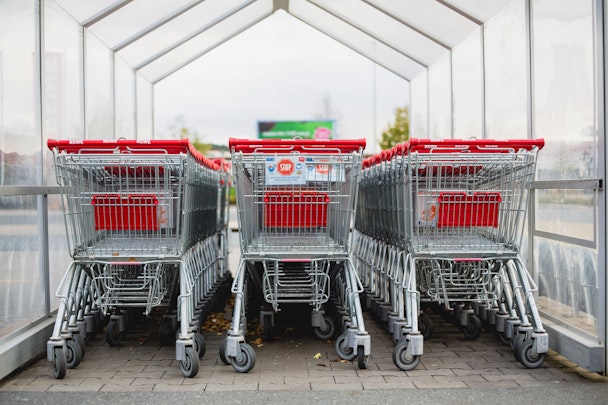
How can you reduce online cart abandonment? Photo by Markus Spiske on Unsplash.
Cart, or basket abandonment emails (also known as cart recovery or remarketing emails) are automated messages sent when a shopper adds items to their shopping cart but abandons before completing a purchase.
They remind shoppers of the items they left behind, and offer them a way to return quickly to complete the purchase.

Abandonment email stats
Due to their relevance and the interest already shown in the product, cart recovery emails have some of the best open and conversion rates of any marketing email.
The average open rate is 43%, but some sectors enjoy higher rates. Travel booking abandonment email open rates averaged 49.3% in 2018.
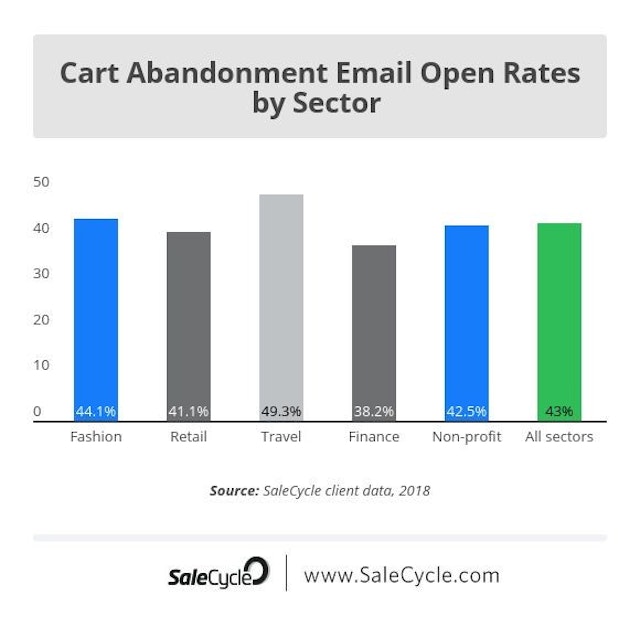
Cart abandonment emails perform strongly, with an average conversion rate of 2.9%.
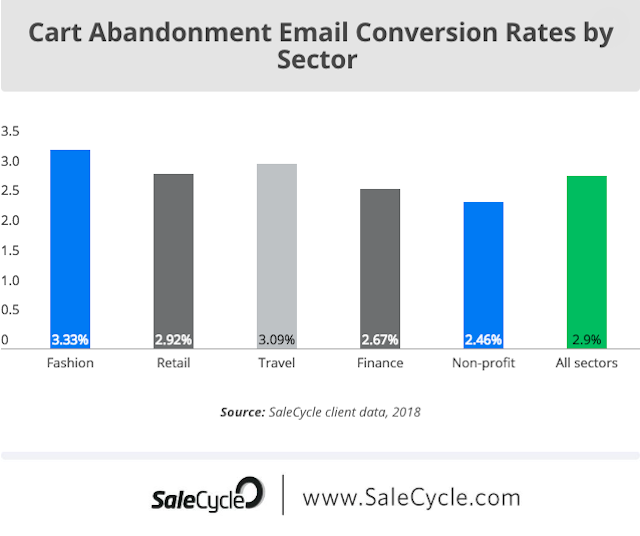
Best practices for basket abandonment emails
It’s not enough just to fire off emails once customers abandon a purchase. The best performing examples contain a combination of great design, smart use of data, and persuasive copy.
A clear summary of cart contents
The key aim is to remind people of what they were about to buy, so the products should be front and centre in emails.
Show shoppers the products they were thinking about buying, and be sure to include the key information they need, such as price and details like size or delivery cost.
Images are important to provide a quick reminder for shoppers. People may have abandoned several other baskets, so it’s important to provide a strong visual cue.
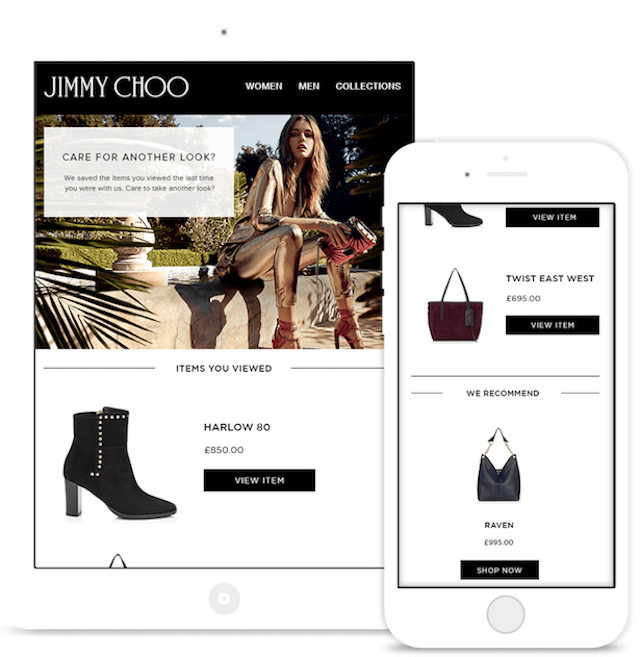
A clear call to action
A key element is the call to action on emails. It’s about making the action you want users to take as clear as possible.
As a general rule, CTAs in emails should be:
- Placed as high up the email as possible.
- Be large and easy to pick up – contrasting colors can work well for this.
- Repeated throughout the email.

Timing
Timing of basket abandonment emails can play a big part in their performance.
There’s no right or wrong answer, but your email should be arriving in the shopper’s inbox while they’re still considering a purchase. The results from our client data suggests that abandonment emails are most effective when sent within or just around an hour after abandonment.
This is just an indication, and the same may not hold true across different industries or price levels. For example, some higher value purchases may require more consideration by shoppers, and sending within an hour may be too soon.
The only reliable answer is to test different send times to find the one which performs best for your target customers.
Dynamic content
The use of dynamic content in remarketing emails can ensure that copy and visuals are up to date and optimized for the individual user.
Dynamic content allows you to:
- Use context and data to show your customers up to date information as they open the email, the latest prices for example.
- Adjust images and information based on where in the world the shopper is, or the products they’re considering.
- Update the information and design of emails for the device they are using.
- Use real time results to make sure you are using the highest converting images.
- Display up-to-date trends information such as product popularity or stock levels.

Segment and Personalise
A high-performing email should be relevant to recipients and the use of segmentation and personalization can help to achieve this.
First, let’s explain the difference between segmentation and personalization:
Segmentation can be used to divide (potential) customers into distinct groups in order to target them with specific content or products. This can include age, gender, geo-location, propensity to purchase and more.
Personalization aims to provide relevance at the individual customer level, using customer data to target them more effectively. This data can be used to recommend relevant cross-selling options based on a customer’s purchase and browsing history.
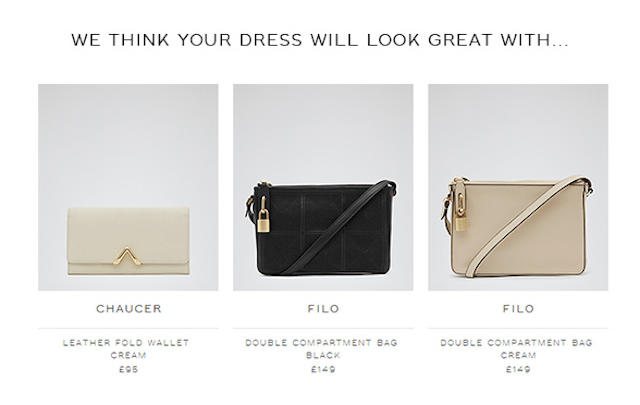
Test and improve
There’s no such thing as a perfect abandonment email, it’s all about testing and refining to find the best-performing emails.
Using techniques like A/B testing, there’s a lot of elements to test within cart abandonment emails. These areas include:
Subject lines. These are a big factor in whether people choose to open emails in the first place. Testing things like personalized subject lines or reminding people of promotions can make a difference.
Calls to action. Placement, size and copy used on calls to actions can improve click through rates.
Timing. How long should you wait before sending emails?
Copy. Email copy can be the difference between recipients clicking through or ignoring emails. Copy style, length and tone can all be tested.
Reinforce key selling points
Key factors like delivery timings and costs, as well as returns can make a difference to the purchase decision. For this reason, it can pay to highlight them in cart abandonment emails, as an extra incentive to purchase.
Here, Fat Face reminds shoppers of its free and next day delivery options, along with its hassle-free returns policy.
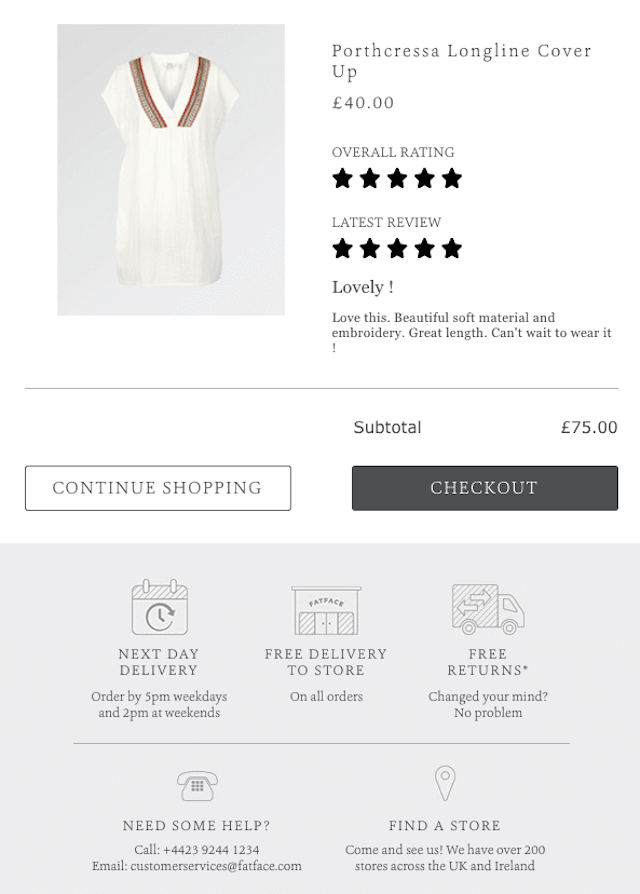
Graham Charlton is editor in chief at SaleCycle
Content by The Drum Network member:

SaleCycle
Founded in 2010, SaleCycle is committed to helping the world’s top brands recover lost sales online.
We work with companies to help inspire, shape and support...
